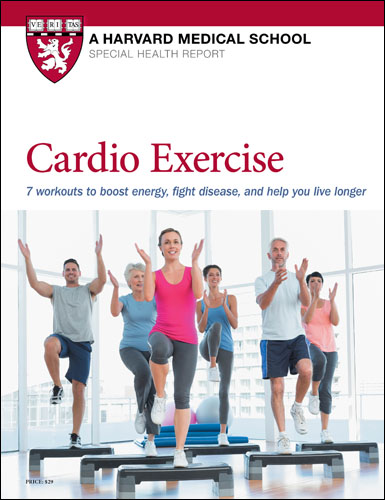Can short bouts of running lengthen lives?

Working hard and feeling like you don’t have any time to exercise? Well, the reality is we all have time. If you’re feeling bad about not exercising enough or at all, some exciting data crunching from a recent British Journal of Sports Medicine (BJSM) analysis of research on running and mortality rates could supply the motivation you need.
What amount of running is better than no running?
An abundance of research supports the health benefits of exercise. In a blog post last year, I wrote about a study in JAMA that took the first look at the effect of various cardiorespiratory fitness levels on longevity. That study showed that being fit, regardless of age, was associated with living longer. The higher the level of fitness, the higher the survival rate.
Now, a systematic review and meta-analysis in BJSM of 14 observational studies has considered whether running — and what “dose” of running — affects the risk for death from any cause, and from cardiovascular health problems (such as heart attack or stroke) or cancer. The researchers looked at pooled data from just over 230,000 participants who were followed for as little as 5.5 years or as long as 35 years. They found that any amount of running is better than no running. Compared with no running, those who ran habitually — even just once a week — had a 27% lower risk for death from any cause, and a 30% and 23% reduced risk of cardiovascular and cancer mortality, respectively. Running pace and distance didn’t matter. And even those who ran for less than 50 minutes a week saw these benefits. In fact, running for longer amounts of time didn’t lower mortality risks further — at least not in this study.
Needless, to say, this is incredibly motivating for those struggling to find time to exercise.
Because vigorous exertion like running may cause sudden cardiac death in a small number of people, clinicians do not always promote running as a form of exercise for certain groups. However, this study provides good evidence that in the general population, the mortality benefit of running outweighs the risk. And again, even a relatively small investment of time in running regularly still confers benefits.
If you don’t currently run, how can you start safely?
Below are six simple concepts that you can follow to help you avoid injury. Before you start, ask your doctor if running is safe for you. If you have heart disease, diabetes, kidney disease, arthritis, or a current or previous history of cancer or high blood pressure, you should always check with your doctor before starting any new exercise program.
- Check your equipment. Make sure you have comfortable, nonrestrictive clothing to be active in, and a pair of sneakers in good condition. A general rule of thumb is to replace your shoes every 300 to 400 miles.
- Start by increasing your day-to-day movement. If you have a desk job or are fairly sedentary, start to purposefully increase your daily walking. Taking a 10-minute walk during your lunch break or in the evening is a simple place to start. Tracking activity with a simple pedometer or other wearable fitness tracker can encourage you to gradually add to your daily average step count. Try taking the stairs rather than the elevator when you can.
- Build up your fitness level in a gradual fashion. Once you’ve gotten to a point where you are less sedentary, work on further building your fitness level by either increasing the speed of your walking (that is, brisk walks) or incorporating other low-impact exercise options, such as cycling or an elliptical.
- Now start to incorporate running. There is an abundance of couch-to-running guides online. The common theme is to start with intervals of walking and jogging, followed by gradual increase in the time spent jogging or running, and ensuring sufficient recovery time at a walk. For example, consider starting with just 30-second intervals of running with two to five minutes of walking in between.
- Listen to your body. It’s not uncommon to experience various aches and pains while taking on a new activity or when increasing a given activity. Do not let this discourage you. Just be sure to pay attention to these symptoms and take the appropriate time or rest to recover. You can cross-train with other physical activities that do not aggravate your pain during this recovery time.
- Don’t underestimate the power of a healthy, anti-inflammatory diet and good sleep. It’s no secret that many of us are not making the best food choices or getting enough sleep. However, these pillars of health are important for providing your body with the nutrients and rest it needs to perform and recover well. Aim to reduce or eliminate the “beige” in your diet: sugar, simple carbs, and processed foods. Meanwhile, gravitate toward a colorful diet of vegetables, protein, and healthy fats, and try to get at least seven hours of quality sleep each night.
About the Author

Marwa A. Ahmed, MD, MS, Contributor
Disclaimer:
As a service to our readers, Harvard Health Publishing provides access to our library of archived content. Please note the date of last review or update on all articles.
No content on this site, regardless of date, should ever be used as a substitute for direct medical advice from your doctor or other qualified clinician.
















